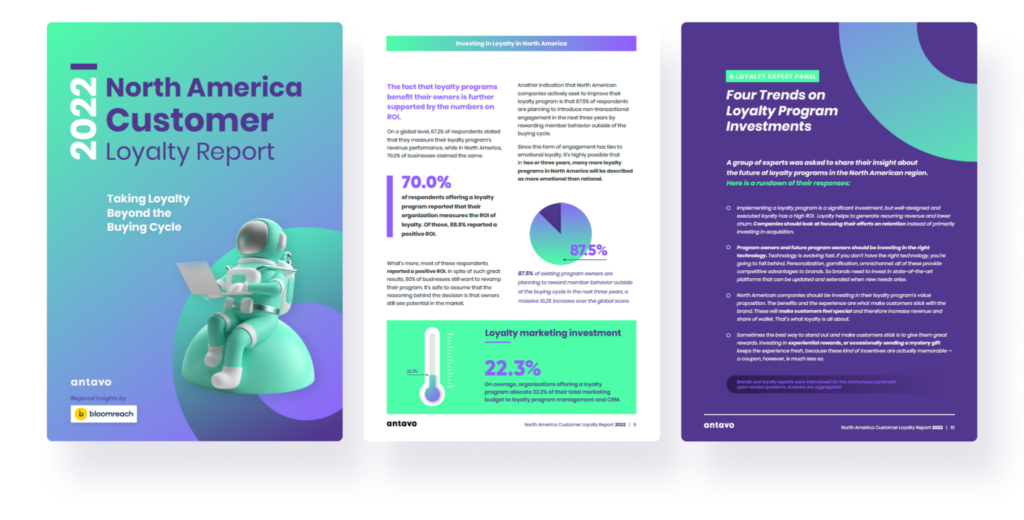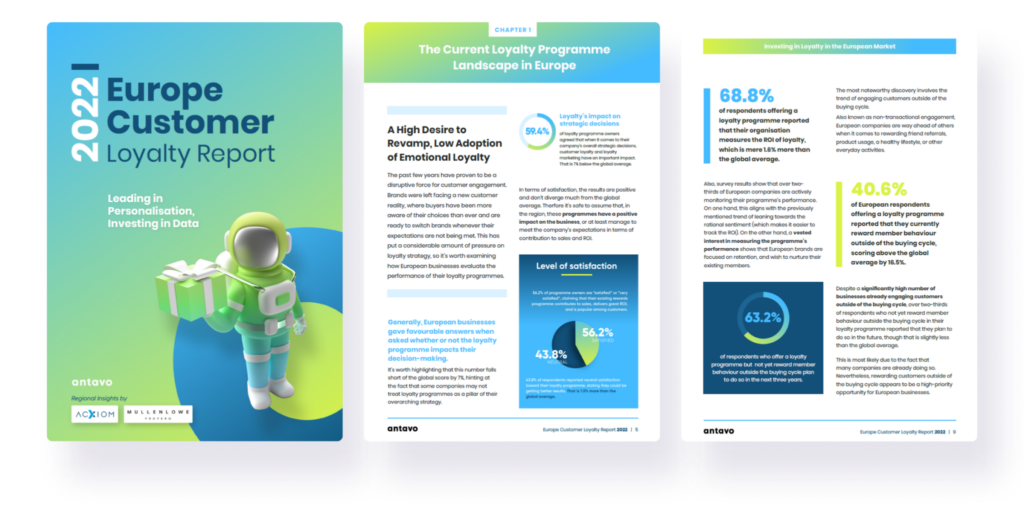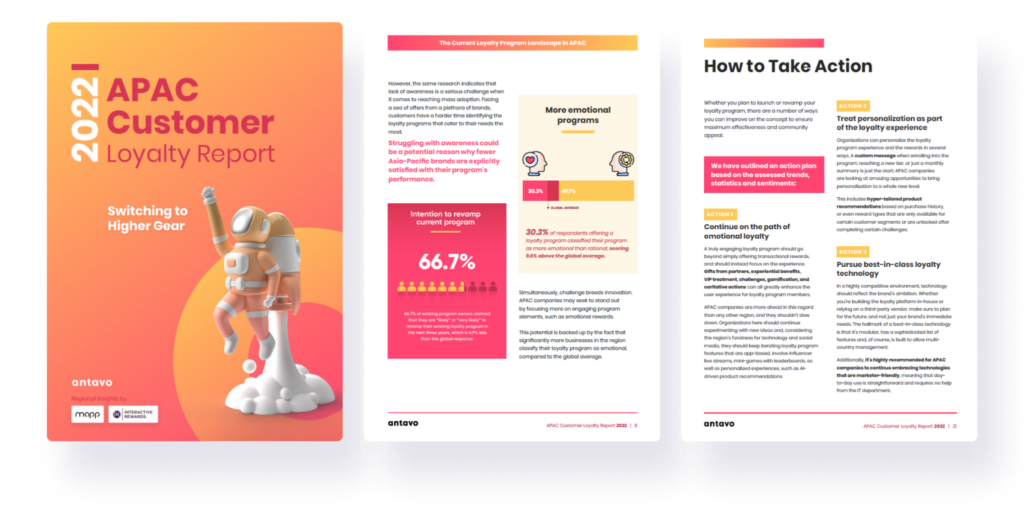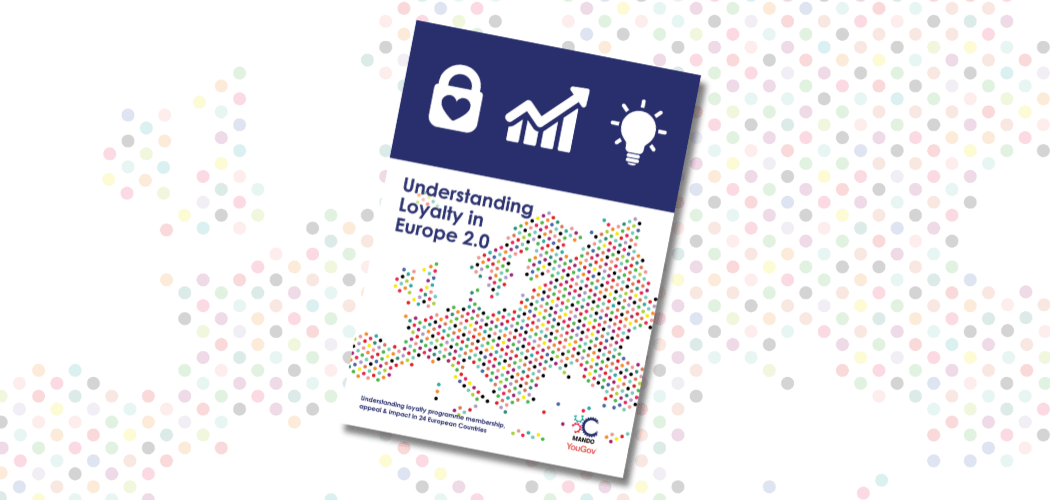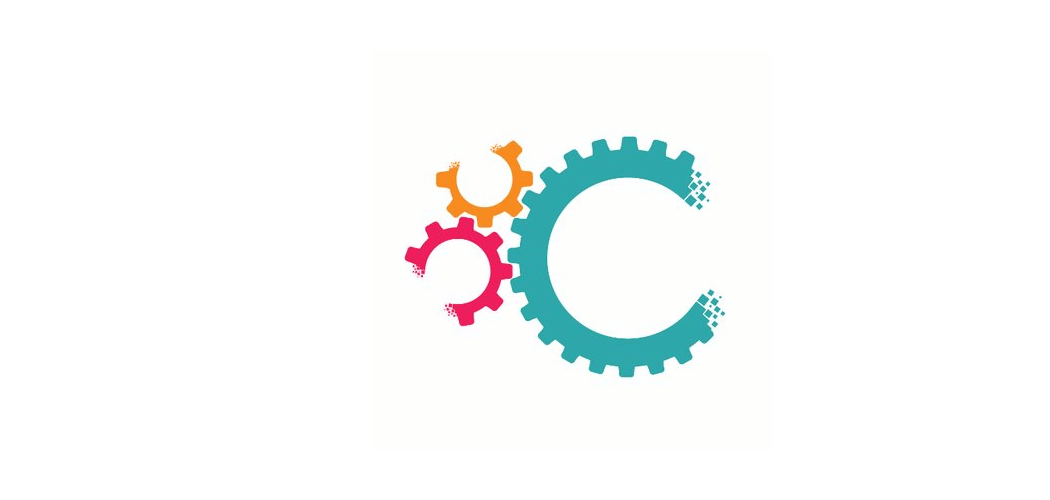Loyalty program trends, challenges and investments are shifting across the globe. But what makes North America different from Asia-Pacific? Or Europe? Antavo, enterprise loyalty technology provider, has some insights to share on customer loyalty across these key regions after having published their Global Customer Loyalty Report 2022 last year.
By: Zsuzsa Kecsmar, Antavo
In the past years, thanks to digital transformation and the general desire to meaningfully connect with customers, loyalty programs have enjoyed success on a level never seen before. Just four months after its release, 3,000 CMOs and loyalty managers downloaded the Global Customer Loyalty Report 2022, so our research team dove deeper into the data for the North American, European and APAC markets. As a result, we’ve launched standalone reports for each market. Each of the three reports provides unique insights into how companies in each region are investing in loyalty marketing, how they see the biggest challenges in customer loyalty, and what types of features they plan to implement in their loyalty programs in the future.
Read on for some of the top regional report highlights.
Satisfaction With Loyalty Program: North America is Leading the Way
Among the three regions analyzed in the global report, loyalty program owners in North America are the most satisfied with their loyalty programs with a rate of 63.3%, which means that even in the largest, most saturated markets, organizations are still finding success with their rewards programs. In Europe, 56.2% of program owners said the same, therefore satisfaction rates closely mirror the global average.
On the other end of the scale is APAC. Just 42.4% of APAC companies said they are satisfied with their programs. It’s also important to note that APAC falls behind Europe and North America in tracking the ROI of their loyalty programs, which is an essential part of understanding program performance. Though the reports did not directly examine the correlation between ROI tracking and low satisfaction rates, a low understanding of program ROI may explain why so many APAC companies indicated neutral satisfaction regarding their loyalty programs.
Offering Personalization in Loyalty Programs: Europe is Ahead of the Pack
European businesses are in the lead when it comes to offering personalization. 56.3% of European companies surveyed say they already offer personalization. On the lower end of the scale, in North America and APAC, 36.7% and 30.3% of respondents said that they offer personalization, respectively.
This represents a huge opportunity for North American and Asia-Pacific companies that are equipped to act fast and start providing personalized offers and experiences for their customers within their loyalty strategy.
Europe is also unique in the sense that 40.6% of program owners in the region already engage customers outside of the buying cycle, higher than companies in other regions currently engaging customers in this way.
Loyalty Platform Priorities: Apac is Fast-Tracking Ease of Use and No-Code Technology
One global challenge in loyalty is finding capable, yet flexible technology that supports the company’s loyalty program strategy. Here’s a quick rundown of how companies are approaching technology and what they would like to see in the future.
While the majority of companies in all three regions desire programs that are easy to use, loyalty program owners in APAC have placed the highest emphasis on making life easier for its marketers. While all three regions indicated they are in favor of no-code loyalty platforms, an incredible 85.7% of companies in APAC favor the no-code approach. This capability is precisely how loyalty platforms can help any company reduce their dependency on IT teams.
In terms of how companies are currently running their loyalty programs, participants in the global study who already have a loyalty program were asked to indicate how their loyalty program is run: with in-house technology or through a third-party vendor. These two options are vastly different and shed a lot of light on the type of experience companies have with their loyalty programs.
51.5% of companies in APAC run their loyalty programs using in-house technology. In North America, companies prefer the third-party approach, with 60% opting for vendors. Meanwhile, European companies saw an even 50-50 split.
Further Investment and Revamps: Clear Worldwide Trends
In our survey, we asked participants how they planned on investing in customer loyalty over the next three years. Most expressed a high desire to “increase” or “significantly increase” their investments. So we are on track to see more support for loyalty programs across the world. At 84.4%, European companies are leading the way in planning to increase investment, closely followed by North America at 80.0%, and APAC at 78.8%.
We also asked respondents from each region how likely they are to revamp their loyalty programs in the next three years. North American respondents took the top spot with 80% planning a revamp, followed by Europe at 71.9%, then APAC at 66.7%. These high percentages, especially in the North American market, indicate that even companies that are satisfied with their current programs have plans to revamp them, perhaps in a bid to keep up with the latest features and loyalty marketing trends.
In three years, what’s considered to be ‘the default’ by loyalty program members will change forever. Companies that are planning to enter the loyalty market in the foreseeable future or wish to revamp their program need to act fast and with caution while considering which trends are gaining momentum.
These statistics only scratch the surface of the insights in our regional reports. Each report contains more information about challenges, trends, and planned investment in loyalty.
Get caught up on additional regional insights by downloading the reports:
Zsuzsa Kecsmar is the Co-founder, CMO and Head of Partnerships of Antavo. She has been a part of Antavo’s growth from startup to scaleup. Listed by Forbes as one of Europe’s top 100 female founders in tech, Zsuzsa is a former journalist recognized by the European Commission.


